-
Posts
3,746 -
Joined
-
Last visited
Content Type
Profiles
Forums
Events
Articles
Marionette
Store
Posts posted by line-weight
-
-
4 hours ago, joestewart4669 said:
Hi all,
stumbled across this looking how to model a mobius strip.
I’ve come across this which is interesting http://demonstrations.wolfram.com/MoebiusStripAsAHalfTwistedSquareTorus/Also I’ve attempted to create a mobius using the subdivision primitive. Anyone else had any luck with that. ?
See the original mobius thread (this one is a kind of spin off). I had some success with the subd tool there:
-
 1
1
-
-
@apswoodwork the issue you describe is a common one. I come up against the same problems modelling windows where i want to be able to change the overall size without distorting the frame profile. In theory the EAP tool lets you do it but frankly it's one of the most horrible tools in vectorworks. Check out plugins like the one jeff prince suggests, to make your life easier.
Actually at the moment I'm helping test another similar plugin, that improves on EAP, but it's not been properly released yet. One of the issues with EAPs is that it's very difficult to adjust the "path" geometry relative to surrounding objects. Plus it's just generally prone to failing and not telling you why.
Once you get into the swing of doing things in 3d I think you'll find it's better and more satisfying. I made the transition from 2d to 3d a few years ago and wouldn't go back.
It can be less work to revise a 3d drawing than a 2d set, because you just adjust the model and then all the plans elevations and sections update themselves (in theory at least). Plus you have the opportunity to visualise the thing in 3d of course, which can sometimes help you to spot things that might be difficult construction-wise in the real world.
-
 2
2
-
-
Yeah a familiar problem and I'd agree with your suggestions!
For a beginner ... it's well worth being aware that as soon as you do a push-pull operation on an extrude, you generally lose the option to go back and edit the 2d source shape - I try and keep this in mind and do edits to the 2d source shape rather than push-pulling, if possible; it's a less destructive mode of editing.
Occasionally in this scenario, if it's something I know I'll want to pull around a lot, I'll make a subdivision because that allows you to select groups of nodes in a similar way to the 2d reshape too.
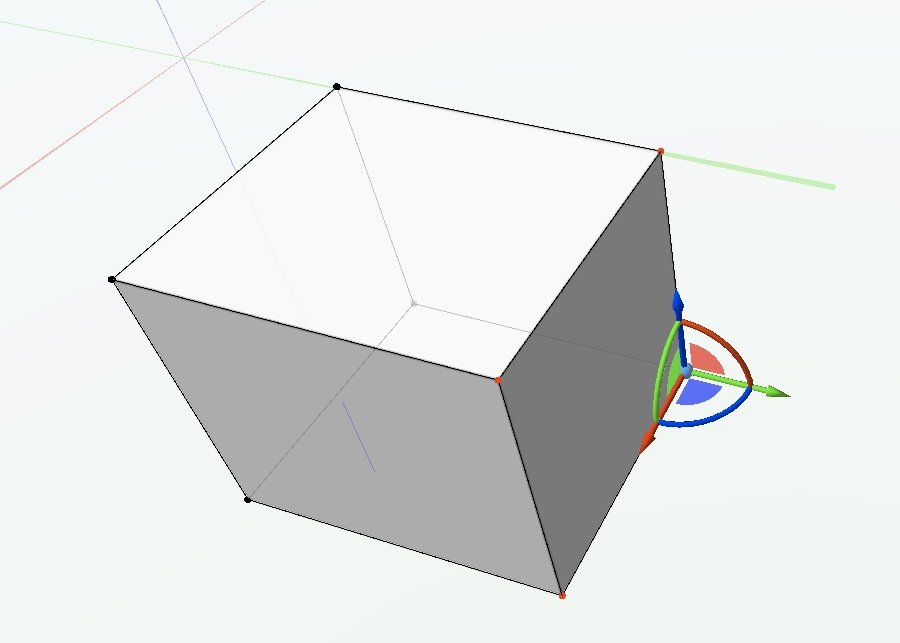
-
 3
3
-
-
On 3/17/2024 at 4:20 PM, line-weight said:
Once I actually try implementing this fully in a real drawing I'll report back with any unanticipated problems (there usually are).
So... I just completed a set of drawings where I used this method. Below, some extracts from the electrical plan, a wall elevation and a 3d view.
Pros:
It's quite satisfying that once it's all set up, I just place a lightswitch or socket as a 3d object, in the model, and it then appears in wall elevations, and also symbolically on the electrical layout. And it's nice to know that if I want to delete it or move it I only need to do that once - I just move the 3d object and it updates everywhere else.
Cons:
It takes quite a lot of careful set up and thinking about class visibilities, stacked viewports and so on. Although, it'll be much easier to set up the next time.
I'm a little concerned that I might come back to this drawing in a couple of months, needing to make some amendments under time pressure, and have completely forgotten how I set it all up.
The main annoyance really is what to do about 2d symbols that land on top of each other because the fittings they relate to are stacked vertically above one another in 3d.
It's a bit of pain to have to make variants of symbols, with offset 2d contents, each time you come across this problem.
I've wondered whether a solution might be to split the layout into separate lighting & power layouts - then the conflicts would be much reduced. It wouldn't be much extra drawing work, but maybe it would be annoying for contractors/electricians... not sure.
A few other small issues, like you can see the downlight symbols have ended up upside down with the "A" the wring way up - presumably physically rotating the 3d container object would sort that.
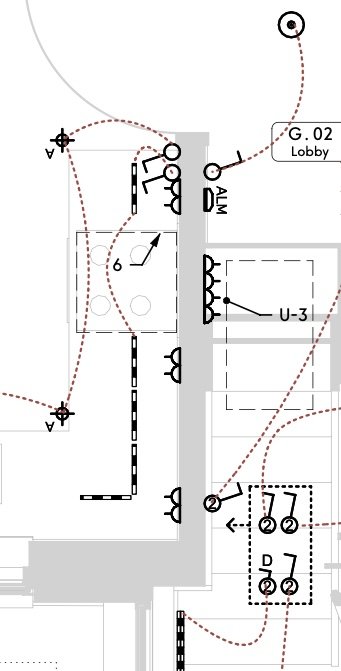
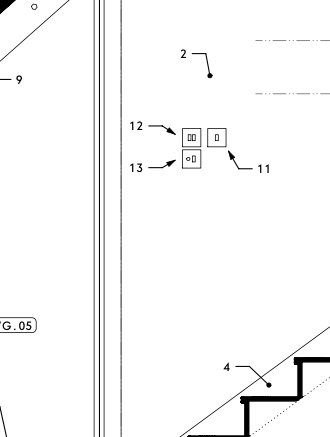
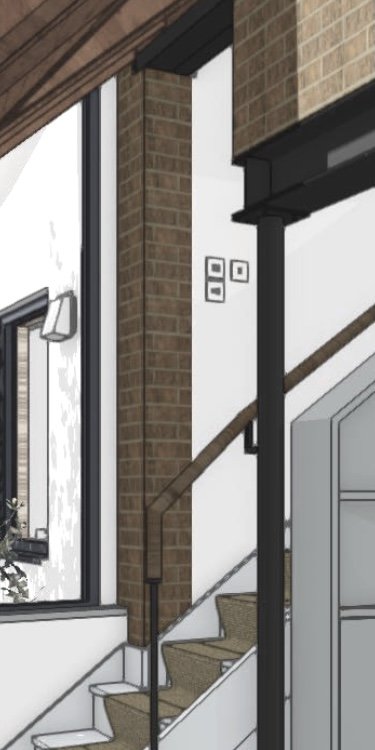
-
 2
2
-
-
The OP needs to explain more clearly what their question is.
-
1 hour ago, Nikolay Zhelyazkov said:
- ohh, okay got it, this means that this linked text could be reading data from other TBBs, which is currently not possible. You can set up a project data field for this that you will have to manually update, but then the data will be visible in all TBBs.
I see. I guess I'd assumed the "most recent issue" data would be stored at file level rather than being contained in individual TBBs. Does VW have to look through every TBB in the file to work out what's the latest issue date?
Anyway, I think it works fine just to include the drawing register sheet in each issue, because if it displays the latest issue no. and date for that sheet, it ought always to be correct (hopefully...time will tell).
-
1 hour ago, Nikolay Zhelyazkov said:
- Yes, this can be done with the custom linked text options. You should have Latest Date as an option there, when you edit the TBB layout and select a text object.
Thanks. I've tried these three

The first one pulls through a date, but it's the date that I set as the issue date of the sheet the drawing register's on.
I suppose that will work as long as I include the drawing register in each issue I make, but ideally I'd like it to pull the same data that the drawing issue worksheet pulls.
-
Has anyone managed to get anywhere with this?
Using the "publish" command results in PDFs with colours that look noticeably different on screen, compared to when they are viewed in Vectorworks.
This is a screenshot - on the right is the bit of drawing viewed in VW, on the left is the same drawing exported to PDF. I've overlaid the two application windows, Preview on the left, VW on the right.
The colour difference might not look dramatic here but it can with a rendered image.
-
I have a slightly side question:
I am making a special title block border for the sheet that I will put my drawing register on.
Can I make that title block automatically report the date of the latest drawing issue?
Can one of these options for linked text do that?

It's the date in the red circle I'm after (this is a sreenshot of the drawing register):
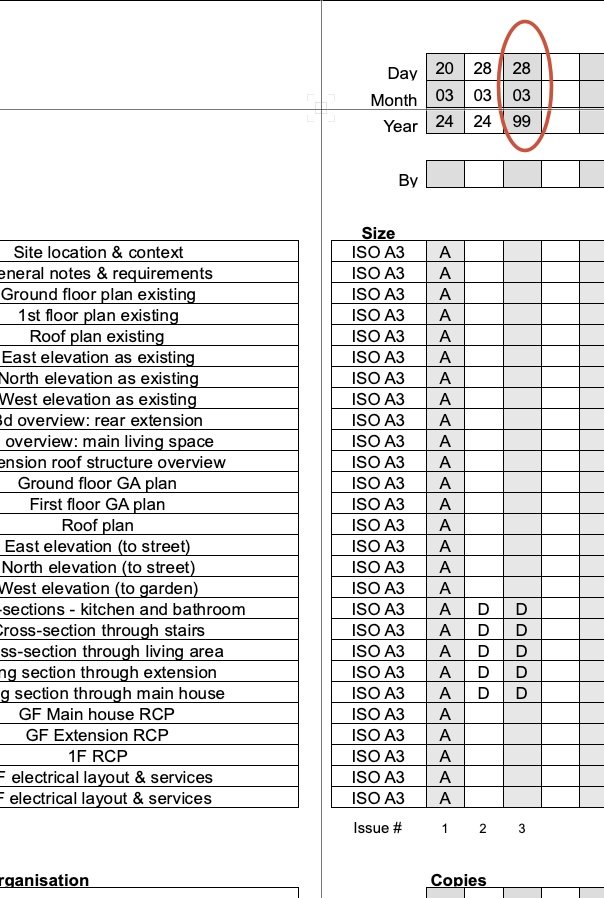
-
7 hours ago, Luis M Ruiz said:
When you press that "refresh button" behind the scenes is taking a screenshot of the model, pure pixels, that's part of the process to understand, if you take a screenshot of an obscure blob with no edges, creating something from it requires you to type or explain what it is. So, nope, this thing is not smart enough to know automatically what you have on screen is a: kitchen or a skyscraper or a ketchup bottle, it needs some help.
A 2d image is valid, a napkin sketch is valid, a massing model is a start, a detailed 3d model helps.
I am always on the look out for prompt formulas, I found this recipe that works for architecture, but also applies to other fields.
Thanks. So it has no "intelligence" about things like orientation of surfaces or distance from camera etc direct from the model ... just what it mysteriously works out from the pixels.
(One of the things that surprises me most about these AI image generators is how they manage to get that stuff mostly right - if the light is shining from the side they seem to know what surfaces to light up. I find it a bit spooky really.)
-
10 minutes ago, zoomer said:
Negative prompt "no red color" didn't prevent that in my case
Is it that your negative prompt needs to be "red color" rather than "no red color"?
-
 1
1
-
-
At some point, VW started to refuse to render these Rendermall plants when they are on the other side of some glazing.
Well, it'll render them while I'm flying around but not when I'm stationary, nor in a static viewport. All I get is the trunks, no foliage.
This is all using Shaded mode.
Any clues?
-
 1
1
-
-
Does the AI "understand" the 3d geometry of the VW model at all or is it simply looking at a 2d image of it and doing its stuff from there?
-
@jblock did you get a chance to look at this?
In the meantime I've been finding another problem:
1. edit a general notes object
2. click on "notes manager" in the general object dialogue
3. in notes manager add a new note, description "A" within chosen database
4. click ok and go back to GN dialogue.
5. add that note "A" to the GN object.
6. go back to notes manager
7. edit the newly created note, changing its description from "A" to "B"
8. back to the GN dialogue and click OK
What I expect now to happen, is that the note with description "A" in my general notes object, which was linked to the database, should change so that its description is now "B". But that's not what seems to happen, instead the GN object still has a note with description "A" but it is unlinked from the database. To get the edited version, the version now with description "B" into my general notes object I have to go and re-add it from the database.
Maybe I am doing something wrong here but this has been causing me a lot of confusion.
-
I want to do this too!
Would save a lot of layout time if I could have a scale bar automatically get placed alongside a drawing label, at the correct scale for the viewport.
The drawing label knows what scale the viewport is, so surely it must be possible.
-
 1
1
-
-
5 minutes ago, Tom W. said:
I am, yes, and we've discussed this previously. I can't remember the precise details but for whatever reason I decided the way the script worked wasn't going to benefit me. What I tend to do is create my first VP from the Design Layer then create duplicates from that on the Sheet Layer. So the initial VP gets the benefit of the Saved View settings but the subsequent ones I have to adjust manually on the SL whereas what I really want to do is just tell it to take it's visibilities from an existing Saved View. I don't think Jesse's script allows this...? I seem to remember you kept a dedicated 'master viewport' sheet layer or something with the express purpose of transferring visibility attributes? Might have got that completely wrong... At any rate I definitely looked at the script a couple of times + on both occasions decided it wasn't for me.
You're probably right and have a better memory than I do.
It's a little while since I last worked on the project where I use that script extensively - I'd have to go and remind myself of the mechanics of it all.
-
3 hours ago, Tom W. said:
I think the worst thing for me is not being able to then utilise these visibility settings when creating Viewports on a Sheet Layer.
Are you aware of this script by @Jesse Cogswell?
-
see also this thread
-
Corner cabinets generally have an L-shaped bit of blank fascia on the inside of the corner, and I don't think there's any way of generating that using the tool, so in addition to needing two cabinets you need to manually model this extra bit.
-
You actually don't even need to go to the keyboard ... it's in the right click menu too
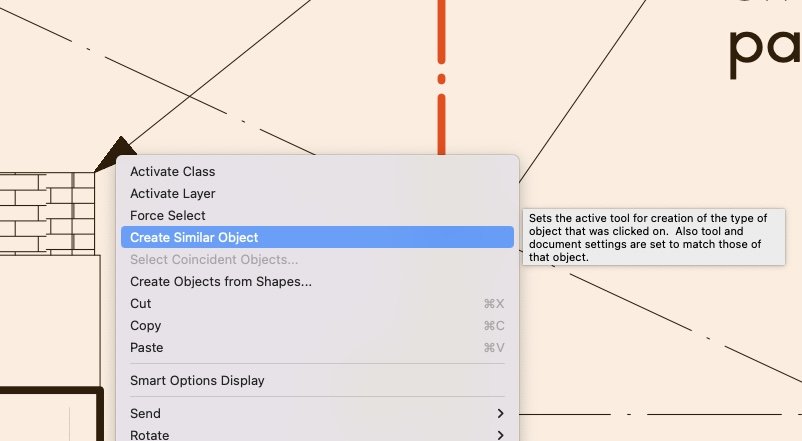
-
 3
3
-
-
Having more control over when 2d components are/aren't displayed would certainly remove a few HSVP headaches for me.
The main one: I find VW door object 2d representations just about tolerable in floorplans, but not VW window object 2d representations. I'd like to be able to say, show doors with 2d components but not windows. Current solution is simply not to use VW windows at all, and build my own.
-
 2
2
-
-
The ideal solution might involve hybrid symbols being able to have a "symbolic 2d" component (that could be page-scaled) as well as the "top" component currently available.
Then you'd need to be able to switch display of those symbolic components on/off per viewport.
But just like with regular 2d components we could do with more granular control, that is potentially per object or object type rather than just a global viewport setting.
-
4 hours ago, zoomer said:
Yes, I found that thread 5 mins later and now understand your intention.
I could imagine that object's world scale settings inside Symbols could
cause problems. But not sure if it is a WAD or wanted that those appear
duplicated.
Because it happens only when I update the viewport at certain zoom levels, it seems unlikely that it's intended behaviour.
-
 3
3
-
-
9 minutes ago, zoomer said:
If these are 3 independent Symbols, I personally do not see anything (risky) "recursive".
The Scale thing sounds risky but no clue if it should be a problem or not.
I just wonder why there are 3D things in a thing that looks to be (used) so 2D only ?
If you're interested in the purpose of this, it's discussed in this thread...
-
 1
1
-



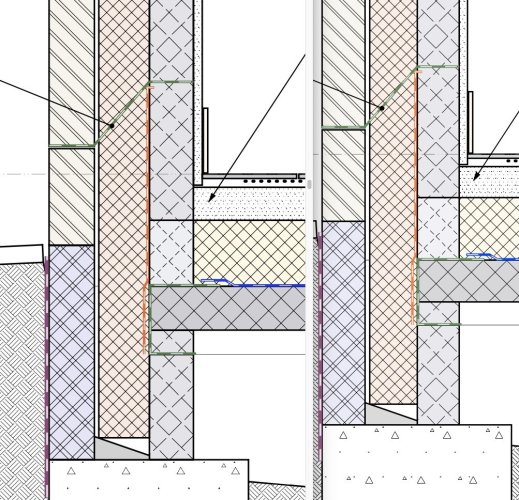

3D resize of a 2 part extrusion
in General Discussion
Posted
The subdivision tool is mainly intended for freeform modelling but you can also use it for more rectilinear shapes.
https://app-help.vectorworks.net/2023/eng/VW2023_Guide/Shapes3/Subdivision_modeling.htm